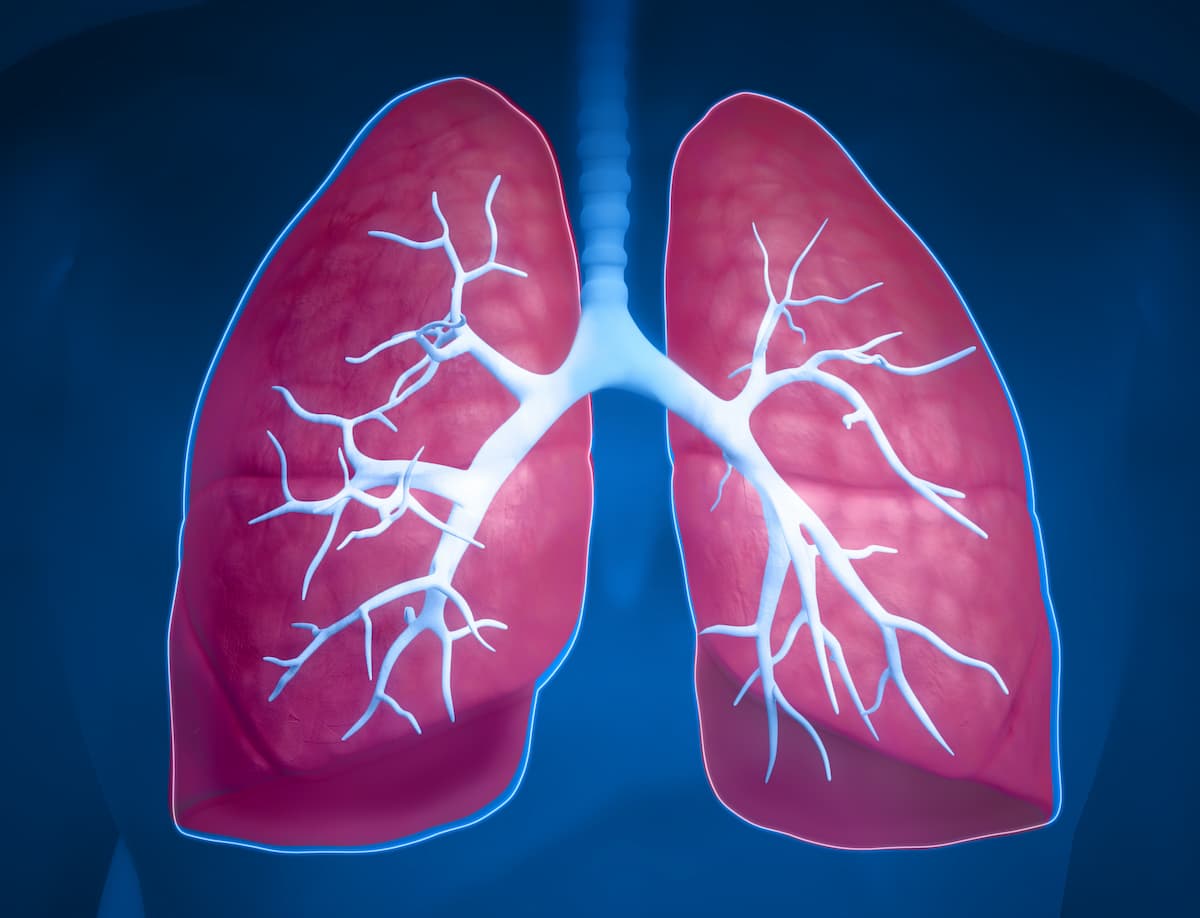Tepotinib/Gefitinib Prolongs Survival in MET-Amplified NSCLC
Treatment with tepotinib and gefitinib appears to be beneficial compared with chemotherapy in a MET-amplified subgroup of patients with non–small cell lung cancer.
"Given the prevalence of MET amplification as a driver of resistance to EGFR TKIs, accurate and reliable biomarker testing for this oncogenic alteration is important to identify patients who could benefit from targeted therapy," according to the authors of the phase 2 INSIGHT trial (NCT03077828).

The MET inhibitor tepotinib (Tepmetko) plus gefitinib (Iressa) improved survival outcomes compared with chemotherapy in a cohort of patients with MET-amplified, EGFR-mutant non–small cell lung cancer (NSCLC) who had experienced progression after prior EGFR inhibitor therapy, according to findings from the final analysis of the phase 2 INSIGHT study (NCT01982955).
Among 19 patients with MET amplification, median progression-free survival (PFS) was 16.6 months (90% CI, 8.3-22.1) with tepotinib/gefitinib vs 4.2 months (90% CI, 1.4-7.0) with chemotherapy according to investigator assessment (unstratified hazard ratio [HR], 0.13; 90% CI, 0.04-0.43). The median PFS by independent review committee (IRC) assessment was 19.3 months (90% CI, 5.6-22.1) in the experimental arm vs 4.2 months (90% CI, 1.4-7.0) in the chemotherapy arm (unstratified HR, 0.16; 90% CI, 0.05-0.52).
The median overall survival (OS) in this subgroup was 37.3 months (90% CI, 21.1-52.1) following treatment with tepotinib/gefitinib and 13.1 months (90% CI, 3.3-22.6) following treatment with chemotherapy (unstratified HR, 0.10; 90% CI, 0.02-0.36).
“This final analysis of the INSIGHT trial shows promising results that tepotinib in combination with an EGFR tyrosine kinase inhibitor [TKI], such as gefitinib, may be able to overcome resistance due to MET amplification in patients with EGFR-mutant NSCLC who have progressed on prior EGFR TKI therapy, potentially providing a much-needed treatment strategy for this patient population,” the investigators wrote. “Given the prevalence of MET amplification as a driver of resistance to EGFR TKIs, accurate and reliable biomarker testing for this oncogenic alteration is important to identify patients who could benefit from targeted therapy.”
A total of 55 patients from sites across China, South Korea, Taiwan, Singapore, Japan, and Malaysia enrolled on the multicenter, open-label phase 2 INSIGHT trial. The median age among all patients was 60.4 years (range, 42-82). The majority (58.2%) of patients were female, and 100% were Asian. A majority (67.3%) had never smoked, and most (80%) had an ECOG performance status of 1. The median duration of prior EGFR-directed TKI therapy was 12 months (range, 2.9-54.0). Moreover, 60% of patients had previously received gefitinib and 14.5% received afatinib (Gilotrif).
Patient demographics were similar in the MET-amplified subgroup. The median age was 60.4 years old (range, 42-74) among randomized patients. Moreover, 68.4% of patients were female, 68.4% had never smoked, and 73.7% had an ECOG performance status of 1. The median duration of prior EGFR-directed TKI therapy was 10.0 months (range, 4.0-46.9).
The median MET gene copy number in this group was 8.8 (range, 4.8-29.5). The median MET/CEP7 ratio was 2.8 (range, 1.0-20.3), and 89.5% of patients had high MET overexpression, defined as a MET immunohistochemistry value of 3 or higher.
Those in the experimental arm received tepotinib at a dose of 500 mg and gefitinib at a dose of 250 mg once daily. Those in the control arm received chemotherapy consisting of pemetrexed at a dose of 500 mg/m2 plus either cisplatin at a dose of 75 mg/m2 or carboplatin dosed according to an area under the curve (AUC) value of 5 to 6. Investigators delivered the chemotherapy regimen intravenously on the first day of each 21-day cycle for up to 6 cycles, or for 4 cycles plus a period of pemetrexed maintenance.
The study’s primary end point was investigator-assessed PFS. Secondary end points included IRC-assessed PFS as well as OS, objective response, best overall response, disease control, and safety.
Across all patients, the median PFS was 4.9 months with tepotinib/gefitinib vs 4.4 months with chemotherapy (stratified HR, 0.67; 90% CI, 0.35-1.28) after a median follow-up of 57.5 months, according to investigator assessment. The median PFS according to IRC assessment was 10.2 months vs 4.3 months (stratified HR, 0.47; 90% CI, 0.21-1.03) with tepotinib/gefitinib vs chemotherapy, respectively.
The median OS was 17.3 months and 19.5 months (stratified HR, 0.67; 90% CI, 0.34-1.32) with tepotinib/gefitinib and chemotherapy, respectively. The corresponding overall response rates were 45.2% (90% CI, 29.7%-61.3%) vs 33.3% (90% CI, 17.8%-52.1%), respectively (stratified odds ratio [OR], 1.99; 90% CI, 0.56-6.87). The median duration of response was 7.0 months (90% CI, 4.1-19.9) with the experimental regimen vs 4.6 months (90% CI, 2.8-5.6) with chemotherapy.
Grade 3 or higher treatment-related adverse effects (TRAEs) occured in 51.6% of patients in the experimental arm vs 52.2% of those in the chemotherapy arm. The most common of these TRAEs in the former arm were diarrhea (9.7%), peripheral edema (6.5%), and increased alanine aminotransferase (3.2%). The most common TRAEs in the latter arm were anemia (30.4%), decreased white blood cell count (8.7%), and nausea (4.3%).
Treatment-emergent AEs of any cause resulting in permanent treatment discontinuation occurred in 9.7% vs 4.3% of patients in the experimental and chemotherapy arms, respectively, with resulting dose reductions among 16.1% vs 17.4%.
Investigators highlighted the fact that poor recruitment led to early termination of this study with a lower-than-planned enrollment, which was among the limitations.
“These exploratory yet promising results supported the rationale for a larger study, the ongoing INSIGHT 2 trial [NCT03940703], designed to assess efficacy and safety of tepotinib combined with osimertinib, in patients with advanced EGFR-mutant NSCLC and acquired resistance to first-line osimertinib and MET amplification,” the investigators concluded.
Reference
Liam CK, Ahmad AR, Hsia TC, et al. Randomized trial of tepotinib plus gefitinib versus chemotherapy in EGFR-mutant NSCLC with EGFR inhibitor resistance due to MET amplification: INSIGHT final analysis. Clin Cancer Res. 2023;29(10):1879-1886. doi:10.1158/1078-0432.CCR-22-3318